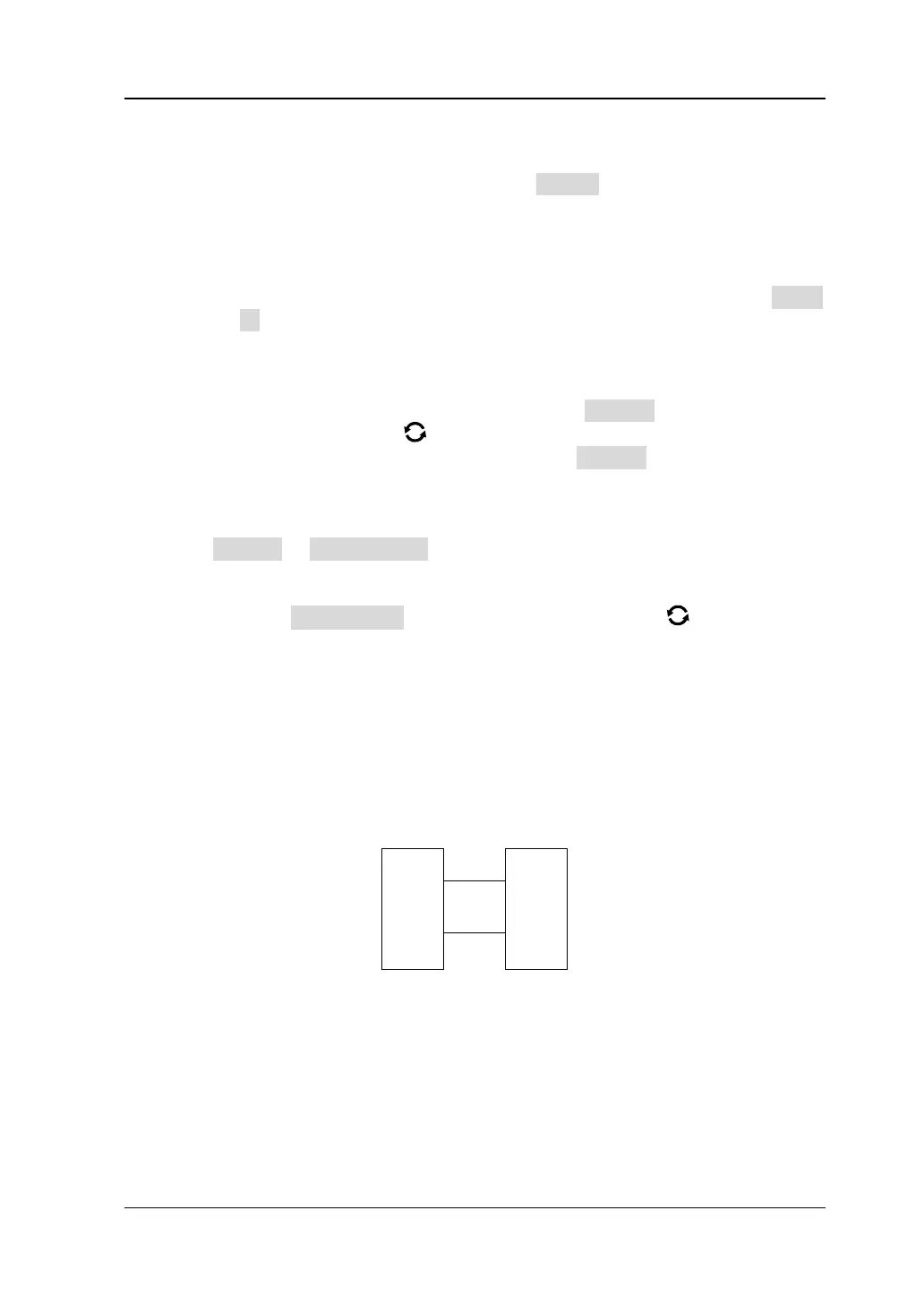Chapter 11 Protocol Decoding RIGOL
MSO7000/DS7000 User Guide 11-7
details in the "Packets" view.
➢ Export: If you select "Packets", you can export time and the
corresponding decoded data. Press Export, the save setting menu is
displayed. You can export the data table of the packets to the internal
or external USB storage device (when detected) in CSV format. For
detailed saving operation, refer to descriptions in "Store and Load".
➢ Jump to: Set the operating status of the oscilloscope to "STOP". Then,
select the data of the specified time from the event table. Press Jump
to and the specified data waveforms are displayed in the center of the
screen.
➢ Decode: The setting of this menu enables you to quickly view the
corresponding event tables of four decode modules (Decode1,
Decode2, Decode3, and Decode4). Press Decode and rotate the
multifunction knob to select a decode module, then press down
the knob to select it. You can also press Decode continuously or
enable the touch screen to select it.
5. Noise rejection
Press Setting → Noise Reject to enable or disable the noise rejection function.
Noise rejection can remove the data that last not enough time on the bus and
eliminate the burst glitch in the actual circuit. When the noise rejection is
enabled, press Reject Time, rotate the multifunction knob or use the
pop-up numeric keypad to set the desired rejection time. The available range of
the rejection time is from 0 s to 1 s.
RS232 Decoding (Option)
RS232 serial bus consists of the transmitting data line (TX) and the receiving data
line (RX).
